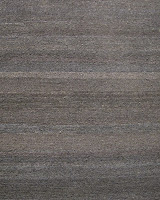The yarn has been derived from the wool of native goats, sheep and yaks. Unlike most of the world's bovids, these Himalayan herds live between 4000 and 7500 meters above sea level. Their natural coats contain some of the highest quality wool on earth. It is against Himalayan custom to even shave these valuable animals. Thus, the wool is painstakingly collected during the summer months while the sheep are shedding. This duty is performed both lovingly and patiently by nomadic shepherds, predominantly women.
Once the wool has been collected and hand-spun into yarn, the fibers are dyed with natural pigments made from many different types of regional flora - including flowers, berries, bark, grass, leaves and even seeds. The women place special care with regards to the quality of the yarn and the specific coloring of the threads. Each color symbolizes a different trait, and the various combinations of color - along with shape and pattern - give each tapestry a distinct look that represents the heritage of a specific region or village in the Himalayas. Once the fabric is dyed, the weaving is done by hand on a vertical loom. The women recite mantras as they work, preparing the ceremonial garbs to be blessed by enlightened monks.
I met him at a house party in TriBeCa. He seemed to enjoy dancing.








No comments:
Post a Comment